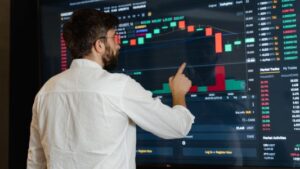As we approach 2025, predictive analytics is becoming increasingly vital for economic forecasting. By utilizing data-driven approaches, businesses, governments, and researchers can make informed decisions about future economic conditions. Here are six methods that are shaping the landscape of economic forecasting.
1. Time Series Analysis
Time series analysis examines historical data to identify trends and seasonal patterns. This method is crucial for forecasting economic indicators like GDP, inflation rates, and employment figures. By understanding past behaviors, analysts can make predictions about future economic performance.
2. Regression Analysis
Regression analysis explores the relationships between different economic variables. For instance, it can determine how changes in interest rates affect consumer spending. By creating models based on historical data, economists can forecast the impact of various factors on the economy.
3. Machine Learning Algorithms
Machine learning is revolutionizing predictive analytics by allowing for the processing of vast datasets. Algorithms can identify complex patterns that traditional methods may overlook. Techniques such as random forests and neural networks can provide deeper insights into economic trends, leading to more accurate forecasts.
4. Sentiment Analysis
Sentiment analysis utilizes natural language processing to gauge public opinion and sentiment from various sources, including social media and news articles. By understanding how consumers and businesses feel about the economy, analysts can better predict future economic behavior.
5. Simulation Modeling
Simulation modeling allows economists to create hypothetical scenarios based on different variables and assumptions. This method helps visualize potential outcomes under varying conditions, enabling better strategic planning for businesses and policymakers.
6. Panel Data Analysis
Panel data analysis combines cross-sectional and time series data, allowing for a more comprehensive view of economic trends. By analyzing data from multiple sources over time, economists can uncover insights that improve forecasting accuracy.
Conclusion
As we move toward 2025, these predictive analytics methods will play a crucial role in economic forecasting. By leveraging these approaches, students and professionals can enhance their understanding of economic dynamics and make informed decisions in an ever-changing environment. For more insights into statistical methods and their applications, consider visiting resources like Statistics Homework Tutors.


